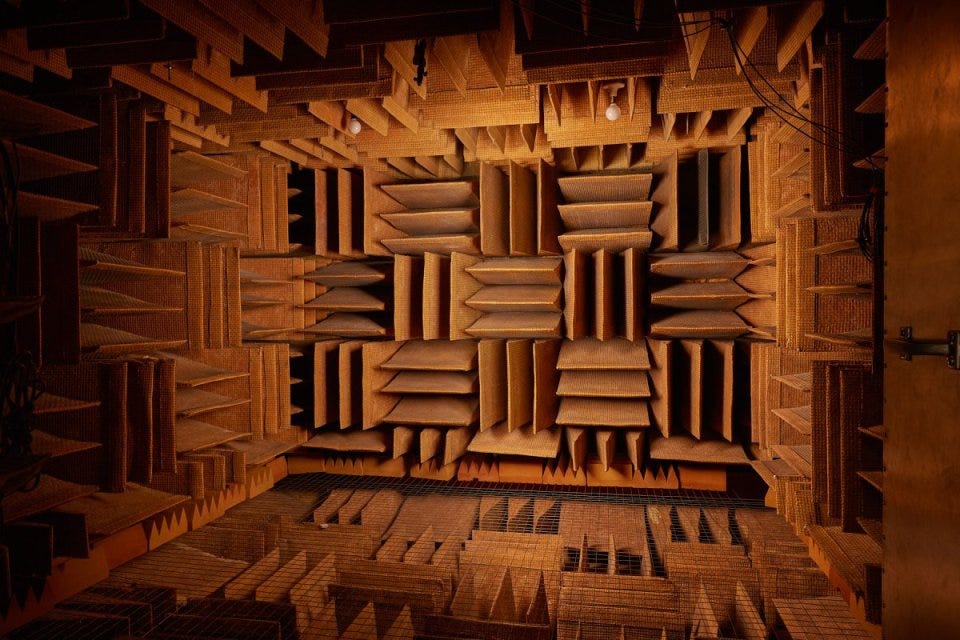Anechoic Chamber at Orfield Laboratories. Photo by Julian Walter
If you’ve ever been stuck in an elevator with someone for an extended period, you’ll know that to begin a conversation is obligatory. To refrain from talking to another person when you’re in unexpectedly close proximity for more than a few minutes is just about impossible, particularly in a potentially perilous situation. It wouldn’t be sensible, it wouldn’t be polite, it would be perceived as hostile and strange. Silence threatens because it evokes nonexistence.
During the third week of the 2022 invasion of Ukraine, police in Nizhny Novgorod, Yekaterinburg, and Rostov-on-Don arrested anti-war activists who held up blank pieces of paper. Protesters held empty signs in Hong Kong in 2020 and in Beijing, Shanghai, and other cities in 2022. If critical words are forbidden, there is nothing to say. And yet saying nothing becomes unacceptable, and an empty sign instantly conveys the substance of an absence.
Keep reading with a 7-day free trial
Subscribe to Book Post to keep reading this post and get 7 days of free access to the full post archives.




